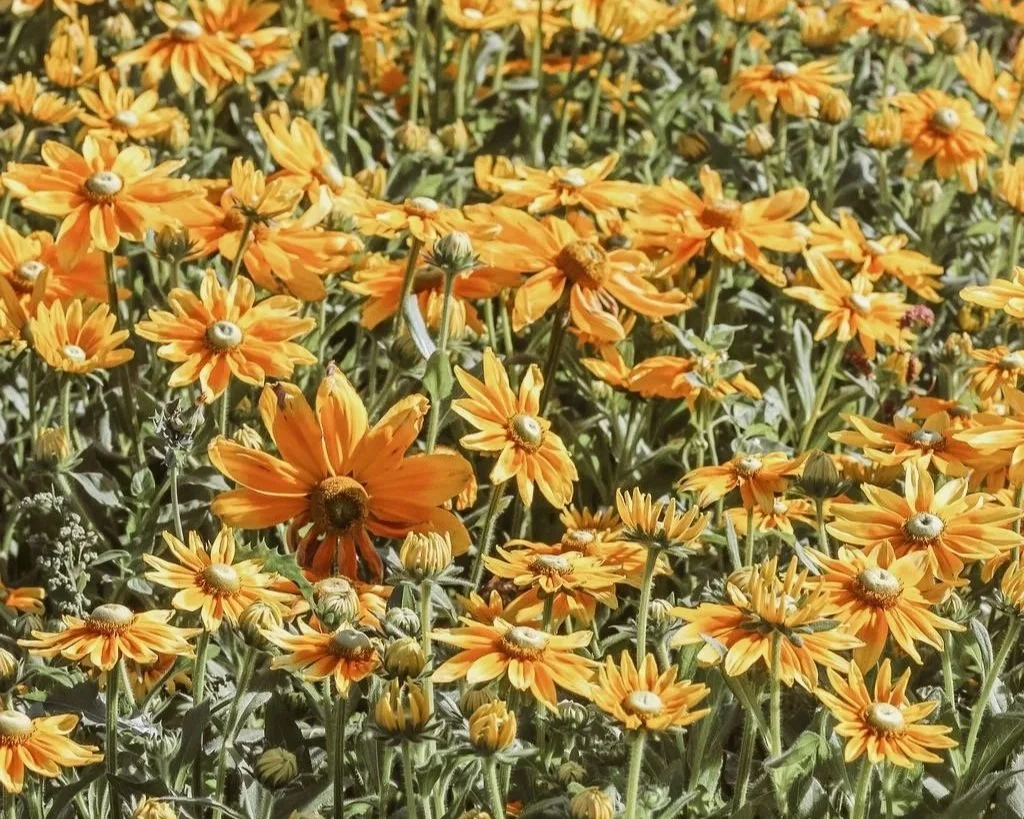How to look after your garden in late summer, and how it benefits your well-being too!
As summer progresses, we may start to notice that the vibrant colours from the flowers in our gardens slowly begin to diminish.
In August we can see that most of the blooms start to look a bit tired, and some simply fade and disappear. This is a natural process. Gardens, exhausted after producing colourful delights of flowers, begin to look a bit quieter. Now the patterns and shapes of foliage start to become more visible and pronounced.
Even though our gardens look more subdued, there are still a number of tasks to be carried out in summer that could elevate their look:
If you want to extend the colour display in your summer garden, it is important to stay on top of the deadheading the spent blooms. Plants, like for example roses, when deadheaded regularly, will reward you with a new display of flowers. It is worth noting, that if you have a variety of rose that makes attractive rose hips, then leave the old flowers on the rose, so it has time to develop into a fruit. Red or orange rose hips will make your garden look more attractive during winter months.
Herbaceous perennials can be cut back in summer so they produce fresh, healthy foliage. This practice will not only improve the overall look of your summer garden, making it a bit tidier, but will also encourage the plants to generate another display of flowers.
During prolonged dry spells, you might need to water your garden. The best time to water is in the evening or very early in the morning, before the sun comes out and the heat increases. Remember to water your plants directly into the soil around the plant base, not on the foliage, to avoid sun burn.
When it rains, make sure you have some buckets placed around your garden to collect and store rainwater, as it is a precious resource.
Also, you might want to consider adding more drought tolerant plants into your garden, reducing the need for constant watering. Some of the drought tolerant plants that will grow well in a sunny garden border are: Santolina, Phlomis, Artemisia, Nepeta, and lavender. Consider herbs like thyme, rosemary or salvia, which will fill your garden with warm, southern scents.
Weeding is one of those tasks in a garden that needs to be done on a regular basis, especially when the weather is warm and humid. If you would like to limit the time spent in your garden weeding, have a look at the density of plants in your garden. If there are big gaps between individual plants, add more plants to create a higher density of planting, this approach limits the chance for weeds to grow.
With some gentle gardening a late summer garden can be renewed and boosted with life and colour.
“…seeing green leaves makes us calmer, happier, more focused and more creative.”
Gardening is one of those activities that greatly benefits not only our physical health, as it requires our bodies to lift, squat and stretch multiple times. It also has a very positive impact on our mental well-being. Simply put, gardening is a great activity for both our bodies and souls.
In her book, Good Nature: The New Science of How Nature Improves Our Health, Kathy Willis points us to a number of studies showcasing the impact plants and in particular colour green has on our well-being. There is mounting evidence that just seeing green leaves makes us calmer, happier, more focused and more creative.
Moreover, gardening teaches us to be more attuned with nature and its cycles, through listening, observing, touching and smelling. As the seasons change, we gain knowledge on the complexities of life and its processes. And to experience all of this we don’t have to live in a cabin in the woods for two years, like David Thoreau, a well-known naturalist and philosopher, we can simply use gardening as our way of connecting with nature and to reflect.
With time spent gardening we build our confidence. We are not afraid that we will do something wrong – we learn with enthusiasm and correct our mistakes as we progress. We become a patient witness to the changes in our garden, which becomes our teacher that guides us gently as we move through the seasons.
Even though there are numerous tasks still to be performed in our gardens this summer, we should never forget how good it is for our “Heiterkeit”.
Kornelia Pawlukowska-Dible, the founder of Hastate Design, has a background in history, art curation and illustration. Her love of learning led her to study horticulture at the SRUC in Edinburgh, where she developed a keen interest in planting design. Kornelia discovered that planting design is a great medium to express herartistic side as well as allowing for constant learning and knowledge development. This encouraged her to create Hastate Design, a planting design business with strong ethos and design principles.
Images by Andrea Marvan, @mondegreen_studio, www.mondegreen.ca


